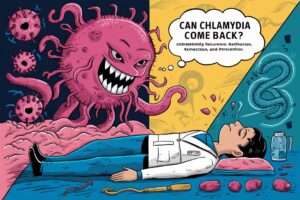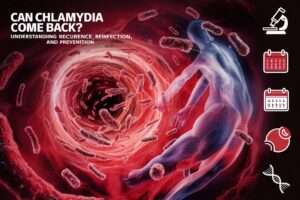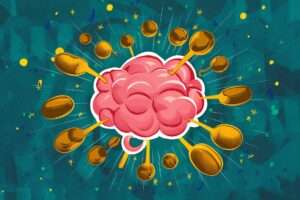How Long Does It Take for Chlamydia to Show Up? Understanding the Timeline and Symptoms
Chlamydia is one of the most common sexually transmitted infections (STIs) worldwide, affecting millions of people each year. If you’re concerned about potential exposure or simply want to be more informed about your sexual health, understanding the timeline for chlamydia symptoms and detection is crucial.
In this comprehensive guide, we’ll explore everything you need to know about chlamydia’s incubation period, symptoms, testing, and treatment.
Anal STI Testing: A Comprehensive Guide to Protecting Your Sexual Health

Table of Contents
ToggleThe Chlamydia Incubation Period: What to Expect
The incubation period for chlamydia refers to the time between exposure to the bacteria and the onset of symptoms or the ability to detect the infection through testing. Here’s what you need to know:
The State of Sex Education in America: Challenges and Progress
1. Typical incubation period: Chlamydia symptoms usually appear within 1 to 3 weeks after exposure.
2. Asymptomatic cases: It’s important to note that up to 75% of women and 50% of men with chlamydia may not experience any symptoms at all.
3. Delayed symptoms: In some cases, symptoms may not appear for several months or even years after the initial infection.
Understanding STD Incubation Periods: A Comprehensive Guide
4. Detection window: Most tests can accurately detect chlamydia within 1 to 2 weeks of exposure.
Understanding the variability in chlamydia’s incubation period is crucial for proper testing and treatment timing.
The Ultimate Guide to Condom Use: 15 Compelling Reasons to Wrap It Up

Recognizing Chlamydia Symptoms
While many people with chlamydia remain asymptomatic, those who do develop symptoms may experience:
In women:
– Abnormal vaginal discharge
– Burning sensation during urination
– Pain during sexual intercourse
– Lower abdominal pain
– Unusual vaginal bleeding between periods
In men:
– Discharge from the penis
– Burning sensation during urination
– Testicular pain or swelling
Both genders:
– Rectal pain, discharge, or bleeding (if infection is in the rectum)
– Eye inflammation (if infection spreads to the eyes)
It’s crucial to remember that the absence of symptoms doesn’t mean you’re not infected. Regular testing is essential, especially if you’re sexually active with multiple partners.

Factors Affecting Symptom Onset and Detection
Several factors can influence how quickly chlamydia symptoms appear or how soon the infection can be detected:
1. Individual immune response: Your body’s immune system may affect how quickly symptoms develop.
2. Bacterial load: The amount of bacteria you’re exposed to can impact symptom onset and detection.
3. Previous infections: If you’ve had chlamydia before, your body might react differently to a new infection.
4. Concurrent infections: Having other STIs simultaneously can affect symptom presentation.
5. Testing method: Different types of tests have varying detection windows and accuracy rates.
When to Get Tested for Chlamydia?
Knowing when to get tested is crucial for early detection and treatment. Consider getting tested:
1. After potential exposure: If you’ve had unprotected sex or suspect exposure, wait at least 1-2 weeks before testing.
2. As part of routine screening: Sexually active individuals, especially those under 25, should get tested annually.
3. Before starting a new sexual relationship: Getting tested helps protect both you and your partner.
4. If you experience symptoms: Even if symptoms appear outside the typical incubation period, it’s worth getting tested.
5. During pregnancy: Pregnant women should be tested for chlamydia in the first trimester and again in the third if at high risk.
Types of Chlamydia Tests
Several testing methods are available for detecting chlamydia:
1. Nucleic Acid Amplification Tests (NAATs): These are the most sensitive and accurate tests, typically using urine samples or swabs.
2. Cell culture: This method involves growing the bacteria in a lab, but it’s less commonly used due to its longer processing time.
3. Direct fluorescent antibody stain: This test uses a fluorescent dye to detect chlamydia bacteria in a sample.
4. Enzyme-linked immunosorbent assay (ELISA): This blood test detects antibodies to chlamydia but is less accurate than NAATs.
Your healthcare provider will recommend the most appropriate test based on your situation and symptoms.
Treatment and Recovery Timeline
If you test positive for chlamydia, treatment typically involves:
1. Antibiotic therapy: Usually a single dose of azithromycin or a 7-day course of doxycycline.
2. Partner notification: It’s crucial to inform recent sexual partners so they can also get tested and treated.
3. Abstinence period: Avoid sexual activity for 7 days after completing treatment to prevent reinfection or transmission.
4. Follow-up testing: Get retested 3 months after treatment to ensure the infection has cleared.
Most people recover from chlamydia within 1-2 weeks of starting treatment. However, any damage caused by the infection before treatment may take longer to heal.
Preventing Chlamydia and Protecting Your Sexual Health
To reduce your risk of contracting or spreading chlamydia:
1. Practice safe sex: Use condoms consistently and correctly during all sexual activities.
2. Limit sexual partners: Having fewer sexual partners can reduce your exposure risk.
3. Get regular STI screenings: Annual testing is recommended for sexually active individuals, especially those under 25.
4. Communicate openly: Discuss sexual health and STI status with your partners before engaging in sexual activity.
5. Consider abstinence or monogamy: These choices can significantly reduce your risk of contracting STIs.
Conclusion
Understanding the timeline for chlamydia symptoms and detection is crucial for maintaining your sexual health. Remember that while symptoms typically appear within 1-3 weeks, many people remain asymptomatic.
Regular testing, safe sex practices, and open communication with partners are key to preventing and managing chlamydia infections. If you suspect exposure or experience symptoms, don’t hesitate to consult a healthcare provider for testing and treatment.
Reference to External Sources:
[1] https://www.cdc.gov/std/chlamydia/stdfact-chlamydia.htm
[2] https://www.who.int/news-room/fact-sheets/detail/sexually-transmitted-infections-(stis)
[3] https://www.ncbi.nlm.nih.gov/books/NBK537286/
[4] https://www.nhs.uk/conditions/chlamydia/


